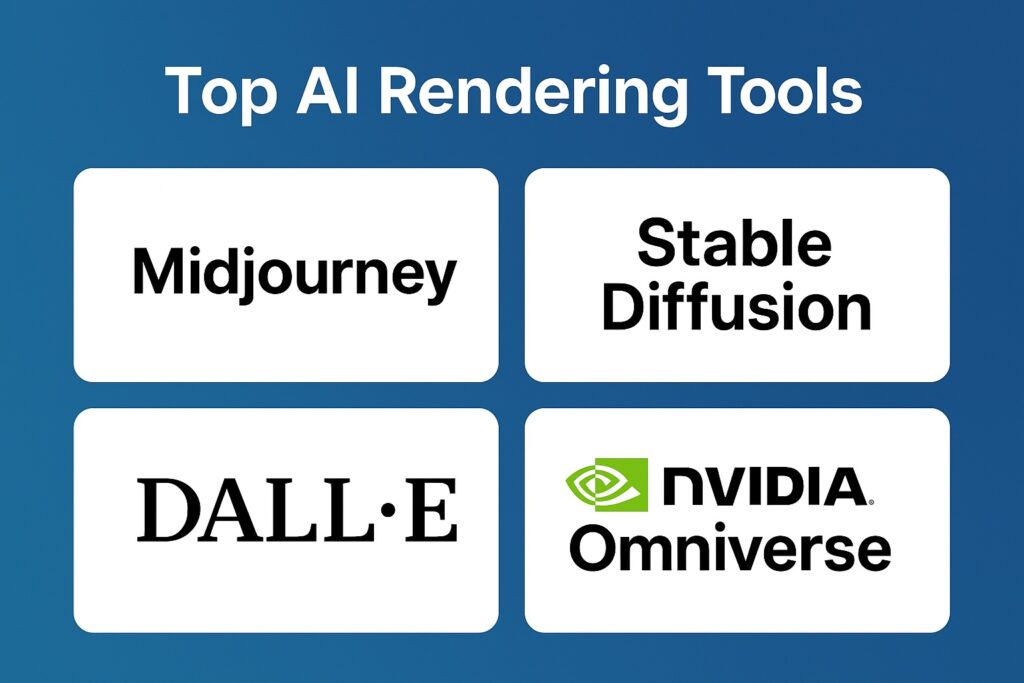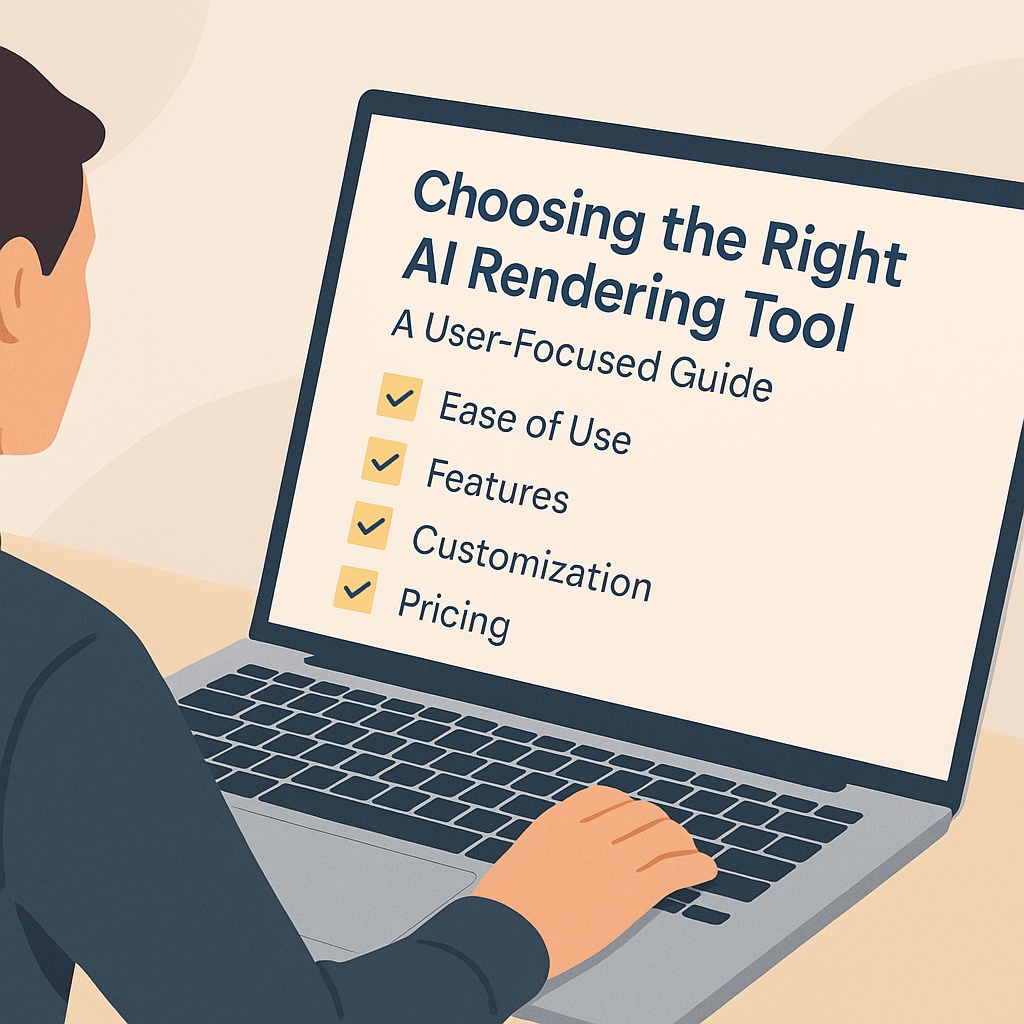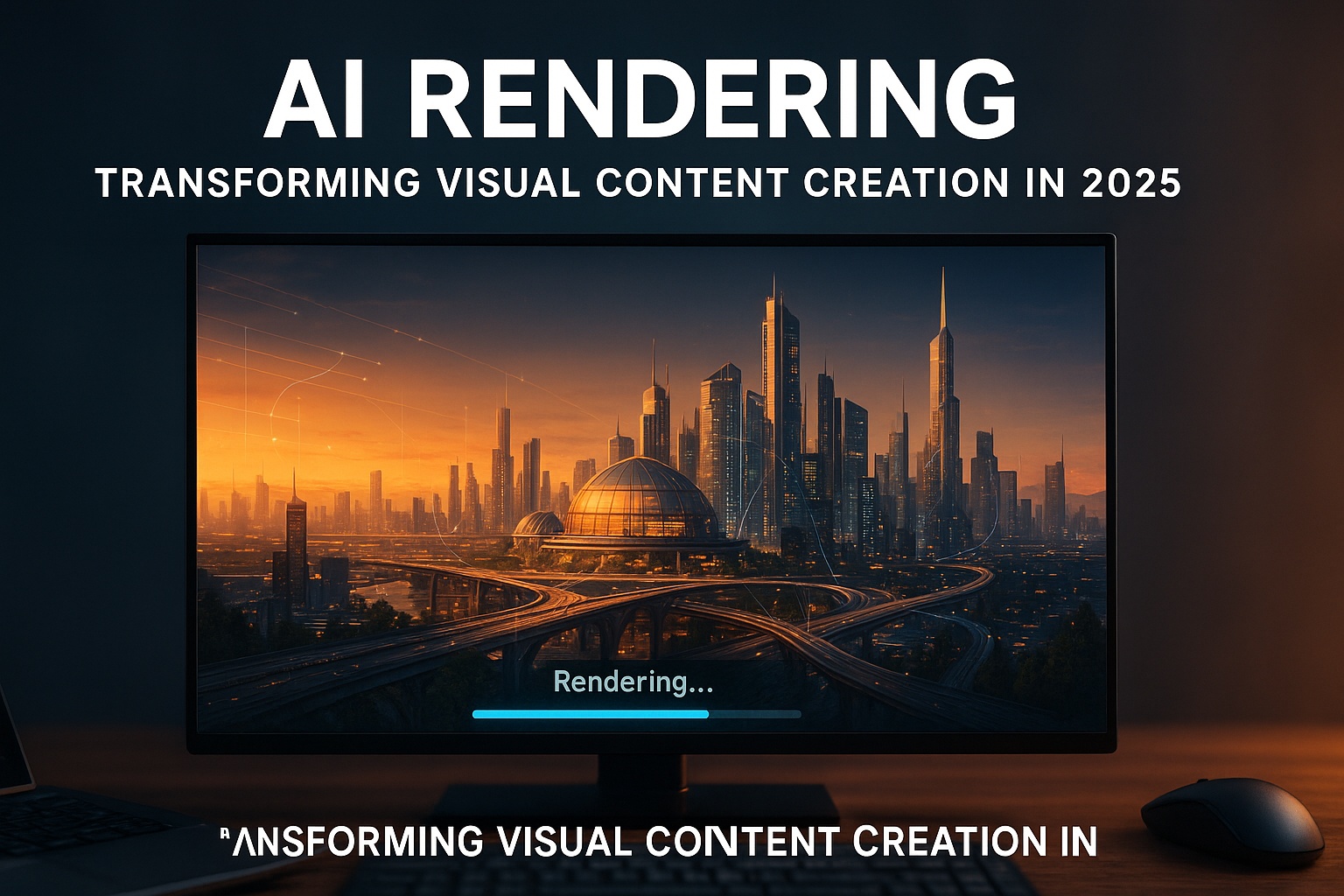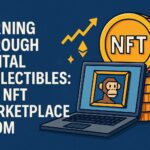Visual content is evolving rapidly, and at the forefront of this transformation is AI rendering. From Hollywood studios to e-commerce platforms, AI-powered rendering is changing how visuals are imagined, created, and delivered. In this in-depth exploration, we dive into the essence of AI rendering, its real-world use cases, top tools, advantages, limitations, and what’s next.
What is AI Rendering?
AI rendering involves using artificial intelligence, particularly machine learning models like neural networks, to generate or enhance visual outputs. Unlike traditional rendering, which is computationally intensive and relies on physical simulation, AI rendering can mimic realistic visuals based on learned data patterns, often at a fraction of the time and cost.
- Neural Rendering: AI reconstructs or synthesizes visual scenes using deep learning.
- Style Transfer: Applying the visual style of one image to another using AI.
- Text-to-Image: Generating visuals from text prompts (e.g., “a futuristic city at night”).
Use Cases Across Industries
1. Entertainment & VFX
Film studios use AI to reduce post-production times. Backgrounds, props, and even entire scenes can be rendered using AI tools like Midjourney and RunwayML, significantly cutting costs while expanding creative freedom. For example, Netflix has begun experimenting with generative visuals for background landscapes in animated series, leading to a 35% reduction in production cycles.
2. Architecture & Real Estate
AI rendering enables architects to present hyper-realistic models to clients. Software like NVIDIA Omniverse allows for real-time walkthroughs that adjust lighting, texture, and even furniture dynamically. Companies like Zaha Hadid Architects are exploring AI for rapid prototyping and client visualization in early design phases.
3. Gaming & Virtual Reality
Games increasingly use AI-generated assets for faster development. AI helps in world-building, texture synthesis, and lighting simulations, enhancing player immersion and developer efficiency. Indie developers especially benefit by using AI to create high-quality graphics with minimal budgets.
4. E-Commerce
Retailers now generate product previews in multiple styles and environments using AI. AI-generated models wearing clothes help eliminate expensive photo shoots. Personalization algorithms render visuals that match user preferences, improving engagement and conversion rates.
5. Simulation & Robotics
Simulated environments powered by AI rendering help train autonomous vehicles and drones in safe, synthetic conditions, allowing millions of virtual tests before real-world deployment. This approach is critical in reducing risk and accelerating development for self-driving technology.
Top AI Rendering Tools

- Midjourney: Known for artistic and surreal styles, available via Discord.
- DALL·E: Created by OpenAI, ideal for conceptual and creative visuals.
- Stable Diffusion: Fully open-source, offering flexibility for developers.
- NVIDIA Omniverse: Industrial-grade simulation and collaborative design environment.
Benefits of AI Rendering
- Speed: Dramatically faster than traditional rendering processes.
- Cost-effective: Reduces reliance on expensive equipment or labor-intensive workflows.
- Customization: Visuals can be tailored for niche audiences and specific use cases.
- Scalability: Ideal for generating content in large volumes, such as in marketing campaigns.
Challenges & Considerations
- Legal Uncertainty: Copyright status of AI-generated works is still under review in many countries.
- Ethical Use: Generating misleading or harmful visuals is a major risk.
- Data Dependency: AI output quality is tied to the data it was trained on—bad data leads to bad results.
- Skill Curve: While accessible, effective AI rendering still requires understanding of prompt engineering.
Tips for Better AI Rendering Results
- Use clear and descriptive prompts. Example: “A futuristic train station, golden hour, photorealistic, 8K resolution.”
- Iterate often. Generate multiple versions and select the best or combine elements.
- Post-process in editing tools like Photoshop for final touches.
- Stay within the tool’s guidelines to avoid ethical or legal issues.
Future Trends in AI Rendering
- Real-Time Collaboration: Teams will co-create in 3D environments across the globe using shared AI rendering workspaces.
- Voice-to-Visual: AI will soon generate visuals from spoken words, streamlining brainstorming and ideation.
- Regulatory Frameworks: Governments may soon require labeling of AI-generated content to prevent misinformation.
- Creative Co-Pilots: AI will assist—not replace—humans, augmenting creativity and technical workflows.
Tool Comparison: Midjourney vs. DALL·E vs. Stable Diffusion
| Tool | Strengths | Limitations | Best For |
|---|---|---|---|
| Midjourney | Highly artistic, great for concept art | Runs via Discord, limited control | Creative professionals |
| DALL·E | Easy to use, strong moderation, integrated with ChatGPT | Somewhat generic results | Beginners and educators |
| Stable Diffusion | Fully open-source, customizable | Requires technical setup | Developers and tinkerers |
Case Study: How a Startup Scaled Visual Ads with AI Rendering
VisualFlow, a San Francisco-based ad tech startup, needed thousands of ad variations for different audiences. Instead of hiring a massive creative team, they used Stable Diffusion with custom-trained models to render backgrounds and product variations on the fly. The result? A 200% increase in ad click-through rates and 70% lower content production costs. The startup now produces over 5,000 image variations weekly with just two designers and one AI engineer.
Looking Ahead: 2025–2030 Predictions
- Hyper-Personalized Visuals: AI will generate visuals based on real-time user data, from location to mood to browsing history.
- Augmented Reality Rendering: Devices like smart glasses will rely on AI rendering for dynamic overlays in real-world settings.
- AI-Powered Virtual Influencers: Entire social media personas could be AI-rendered, engaging with audiences 24/7.
- Standardization & Regulation: Expect visual watermarking standards and legal mandates for AI-generated media transparency.
AI rendering is only getting started. From practical design aids to experimental creativity, it’s redefining how humans and machines co-create. By staying informed and exploring responsibly, we ensure this technology becomes a tool for good in a highly visual digital future.
Choosing the Right AI Rendering Tool: A User-Focused Guide

With so many options available, it can be overwhelming to decide which AI rendering tool to use. Here’s a simplified guide for different kinds of users:
- Beginners: Start with DALL·E due to its easy-to-use interface and built-in safety filters. It’s ideal for casual users, educators, or marketers needing quick visuals.
- Artists & Designers: Midjourney is your go-to. It produces stylized, artistic images perfect for concept art, digital storytelling, and inspiration boards.
- Developers & Tinkerers: Stable Diffusion offers unmatched customization. You can host it locally, fine-tune models, or even train on your own datasets.
- Enterprise Users: NVIDIA Omniverse provides scalable, collaborative infrastructure for complex projects like 3D simulation or industrial visualization.
Pre-Publication Checklist for AI-Generated Visuals
Before publishing visuals created through AI rendering, consider the following checklist to ensure quality and compliance:
- ✔️ Confirm prompt clarity: Was the input prompt specific and aligned with your brand/message?
- ✔️ Evaluate visual accuracy: Are all visual elements consistent and believable (no extra fingers, warped features)?
- ✔️ Check for bias: Ensure generated content does not unintentionally reinforce stereotypes or biases.
- ✔️ Apply post-processing: Minor edits or adjustments may be needed to improve color, composition, or clarity.
- ✔️ Attribute or disclose: If necessary, indicate the image was AI-generated, especially in journalism or advertising.
Community Insights: What Creators Are Saying
We analyzed discussions from community hubs such as Reddit and Discord where the topic of AI rendering is trending. Here’s what some creators shared (anonymized and paraphrased for clarity):
“Midjourney made my storyboarding process 10x faster. I can visualize a scene and iterate without waiting on an illustrator.”
“DALL·E is cool, but I needed more control. Once I switched to Stable Diffusion with a custom model, my image quality jumped.”
“The ethics side is tricky. I watermark all my AI-generated work so viewers know it’s synthetic. Transparency builds trust.”
These voices reflect the growing maturity of AI rendering communities—where collaboration, experimentation, and responsibility walk hand in hand.
Quick Recap: Key Takeaways
- AI rendering is revolutionizing visual content creation across industries like film, architecture, and e-commerce.
- Top tools include Midjourney, DALL·E, Stable Diffusion, and NVIDIA Omniverse—each suited for different users.
- Benefits include speed, cost-efficiency, and creative flexibility, while challenges include ethics and legal ambiguity.
- Communities are actively shaping best practices for responsible use of AI-generated media.
Simulated Interview: Inside the Mind of an AI Creator
Q: What inspired you to start using AI rendering in your work?
A: As a freelance concept artist, I often struggled with tight deadlines. AI rendering allowed me to generate base scenes or concepts within minutes, which I could then refine manually. It freed up my creative energy and allowed me to meet client expectations faster.
Q: Do you see AI as a threat to traditional artists?
A: Not at all. I see it as a tool. Artists who embrace AI can focus more on ideation and storytelling. It’s like having a super-fast assistant. But we still need the human touch to decide what’s meaningful or beautiful.
Conclusion
AI rendering is set to become a foundational technology in the future of content creation. By blending creativity with automation, it empowers artists, businesses, and innovators to bring their visions to life faster and more effectively. But with great power comes responsibility. Understanding its capabilities and limits is essential to ensure ethical use and high-quality outcomes. Whether you’re a beginner or a pro, 2025 is the year to explore AI rendering and all it has to offer.
References
We Want to Hear From You!
Have you tried AI rendering? What’s your favorite tool or the most surprising result you’ve created? Leave a comment or tag us on social media with your AI art! Let’s explore this frontier together—one pixel at a time.



